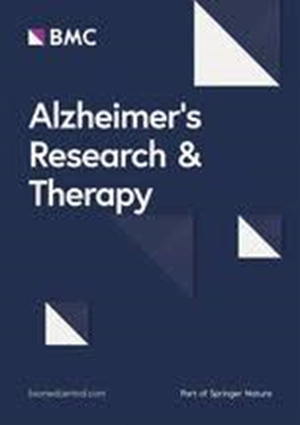早期与晚期失忆型阿尔茨海默病的颞叶内侧萎缩模式
IF 7.9
1区 医学
Q1 CLINICAL NEUROLOGY
引用次数: 0
摘要
内侧颞叶(MTL)被认为在早发性阿尔茨海默病(EOAD)中相对不受影响。然而,目前还缺乏对内侧颞叶亚领域和失忆性阿尔茨海默病萎缩驱动因素的详细研究。BioFINDER-2 纳入了有记忆障碍、淀粉样蛋白-β和 tau-PET 异常的参与者。研究还纳入了41名年龄小于65岁的失忆性EOAD患者,以及作为对比的晚发性AD患者(aLOAD,≥70岁,n = 154)和淀粉样蛋白-β阴性的认知功能未受损的对照组。对MTL亚区和(共)病理生物标志物进行了测量。与对照组相比,AD 组的 MTL 亚区更小。各AD组的萎缩模式相似:aLOAD比aEOAD显示出更薄的内侧皮层;aEOAD比aLOAD显示出更薄的顶叶区域。在 MTL tau-PET 或转录反应 DNA 结合蛋白 43 代理阳性率方面没有发现差异。我们发现有证据表明,失忆症 EOAD 中的 MTL 出现萎缩,而 MTL tau 病理学和共病理学的总体水平与 aLOAD 相似。本文章由计算机程序翻译,如有差异,请以英文原文为准。
Medial temporal lobe atrophy patterns in early-versus late-onset amnestic Alzheimer’s disease
The medial temporal lobe (MTL) is hypothesized to be relatively spared in early-onset Alzheimer’s disease (EOAD). Yet, detailed examination of MTL subfields and drivers of atrophy in amnestic EOAD is lacking. BioFINDER-2 participants with memory impairment, abnormal amyloid-β and tau-PET were included. Forty-one amnestic EOAD individuals ≤65 years and, as comparison, late-onset AD (aLOAD, ≥70 years, n = 154) and amyloid-β-negative cognitively unimpaired controls were included. MTL subregions and biomarkers of (co-)pathologies were measured. AD groups showed smaller MTL subregions compared to controls. Atrophy patterns were similar across AD groups: aLOAD showed thinner entorhinal cortices than aEOAD; aEOAD showed thinner parietal regions than aLOAD. aEOAD showed lower white matter hyperintensities than aLOAD. No differences in MTL tau-PET or transactive response DNA binding protein 43-proxy positivity were found. We found evidence for MTL atrophy in amnestic EOAD and overall similar levels to aLOAD of MTL tau pathology and co-pathologies.
求助全文
通过发布文献求助,成功后即可免费获取论文全文。
去求助
来源期刊

Alzheimer's Research & Therapy
医学-神经病学
CiteScore
13.10
自引率
3.30%
发文量
172
审稿时长
>12 weeks
期刊介绍:
Alzheimer's Research & Therapy is an international peer-reviewed journal that focuses on translational research into Alzheimer's disease and other neurodegenerative diseases. It publishes open-access basic research, clinical trials, drug discovery and development studies, and epidemiologic studies. The journal also includes reviews, viewpoints, commentaries, debates, and reports. All articles published in Alzheimer's Research & Therapy are included in several reputable databases such as CAS, Current contents, DOAJ, Embase, Journal Citation Reports/Science Edition, MEDLINE, PubMed, PubMed Central, Science Citation Index Expanded (Web of Science) and Scopus.
 求助内容:
求助内容: 应助结果提醒方式:
应助结果提醒方式:


